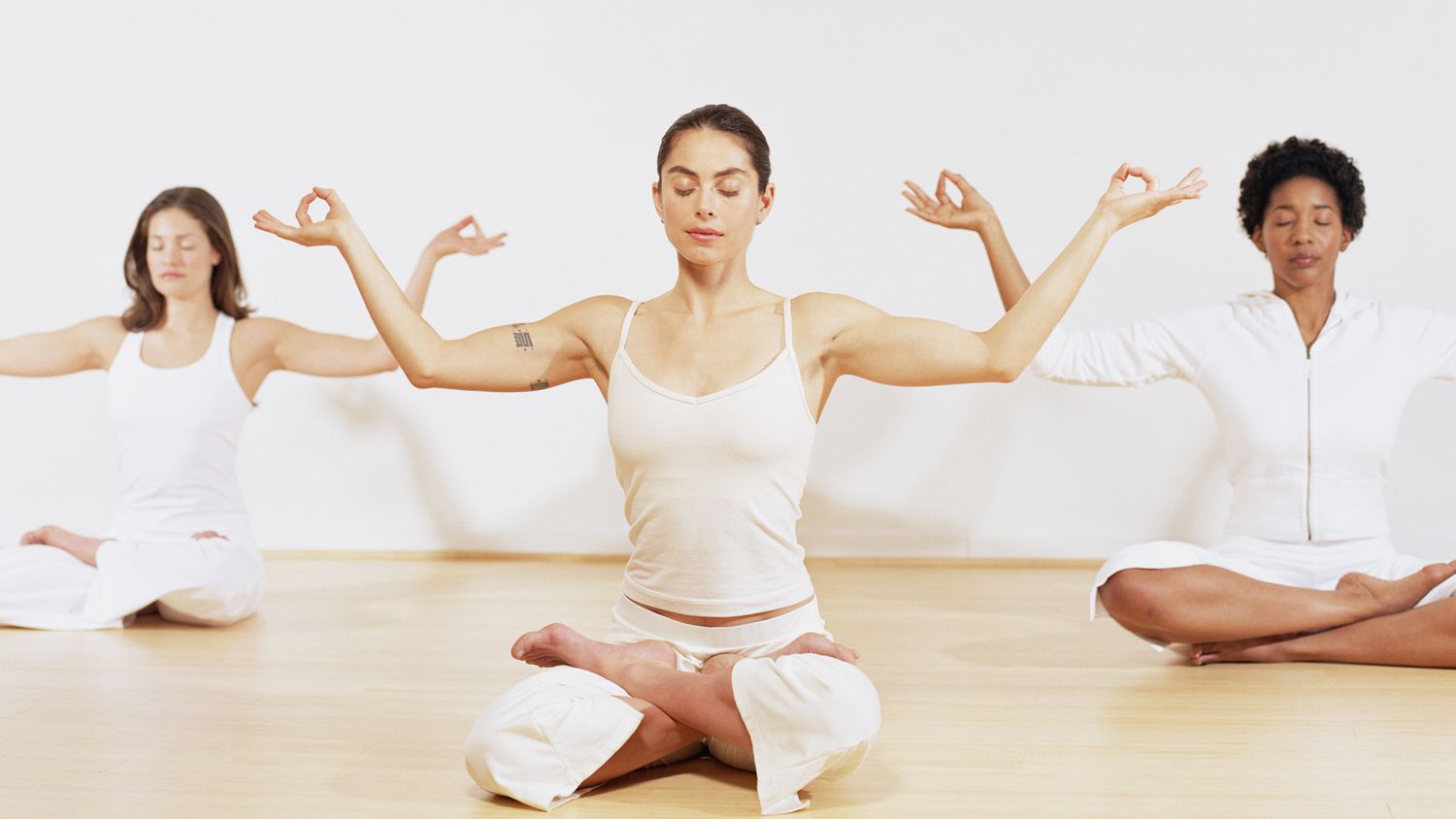Mindfulness meditation is “to focus attention on the present moment.” Meditation is one of the ways to develop mindfulness. The mind is an anchor that keeps you in the present. Your thoughts may come in, but you can use this anchor to return to the next breath. It is important to sit comfortably, so choose a solid, comfortable chair or cushion. It would help if you also placed your feet flat on the floor. Then, take your time to focus on your breathing.
When you meditate, your mind will expand. It will merge with the universal mind, but you will still be able to pay attention to everything. Consciousness is a vast reservoir of energy, a blissful state of being, and the essential nature of the mind and the inner Self. Words are not enough to describe the experience. As long as you have a strong desire to achieve your goal, you will find that meditation can be a great tool.
It reduces stress, which can compromise our immune system and cause many health problems. It also has many positive effects on the mind and can help us deal with daily challenges more effectively. When we are under excessive stress, our bodies respond negatively to our surroundings. However, mindfulness can reduce stress, and our bodies respond more favourably to stress. If you want to improve your health and prevent mental illness, mindfulness meditation is an effective way to do so.
Mindfulness Meditation is Focusing attention on the present moment
One of the essential elements of meditation and mindfulness is focusing on the present moment. Keeping the mind in the present moment is not easy because our mind naturally wanders, thinking about the past or future. Too much focus on history and the end will cause anxiety, regret, or general unhappiness. You can improve your mental state with your attention to the present moment. Here are some ways to improve your mental state.
Many people have difficulty staying in the present moment. Because they have a natural tendency to ruminate about the past and worry about the future, putting too much energy into worrying about the future or the past can cause anxiety, stress, regret, and general unhappiness. However, living in the present moment can help people reduce their stress and anxiety levels. Focusing attention on the present moment has been recommended by many world religions.

Practicing mindfulness meditation in daily life
This simple technique helps you focus on the present moment and eliminates stress, anxiety, and other concerns. It’s not a one-time practice, but it can be a part of your life and help you cope with many different situations. The best way to start practising mindfulness is to find time in your day to sit down and breathe deeply. Once you’ve mastered this technique, you can try other forms of meditation, such as body meditation and mindful walking.
Our daily life is a great way to slow down and become more aware of the present moment. This practice allows you to truly participate in a particular moment in life rather than being consumed with other thoughts and worries. That can practise in almost any routine activity. For example, suppose you’re driving, walking, or sitting in an office. In that case, you can practice open awareness by paying attention to your body’s sensations. You can also practice mindfulness by identifying sights and sounds without judgment.
Relationship with large-scale brain networks
There is still a shortage of knowledge about the neural mechanisms involved in meditation and mindfulness practices. Previous studies of meditation techniques have investigated different styles and methods. In contrast, other research has examined the effect of emotionally charged sounds during meditation on neural networks. However, these studies have not established a consistent neural correlate of meditation.
Furthermore, most prior studies have not included adequate matched controls. This study aims to fill this gap in the relationship between mindfulness and activation of specific brain regions. Meditation seeks to bring our minds back to the present moment. Our brains’ neural activity consists of several distinct areas, each contributing to various aspects of the experience. Each region is related to other brain regions in different ways, and a relationship between the two is vital for understanding the effectiveness of mindfulness meditation

Benefits of Mindfulness Meditation
One of the many benefits of meditation and mindfulness is a decrease in the amount of anxiety experienced. It works by shifting your mental bandwidth away from intrusive anxious thoughts. In the studies, meditators and non-meditators reported significantly fewer symptoms of fibromyalgia and irritable bowel syndrome. Another benefit is a reduction in healthcare costs. A survey of over 2,800 people found that those who practised mindfulness reduced their health care costs by an average of 11% after just a year. The reduction was even more significant after five years. In contrast, those who do not have mindfulness did not see any significant reduction in healthcare costs.
Mindfulness Meditation: Ways to practice
Mindfulness Meditation involves focusing your attention on your breathing and a mantra. Concentrating on your breath and body sensations will allow you to become more present at the moment. You may also want to name emotions and sensory experiences at the moment. Then, when your mind wanders, gently bring it back to the present moment. Good practice involves repeating this process over. There are many ways to practice meditation and mindfulness, so choosing one that feels comfortable and works for you is essential.
To live a more mindful life, you must find time to practice your daily activities. Even the most minor tasks can call up a sense of mindfulness. You might not realize it, but our actions are often unintentional, so it’s good to give ourselves a few moments to stop and think about what we’re doing. Practising mindfulness brings more calm into our lives, and we’ll be able to enjoy the moments we experience.
What Makes a Person Mindful?
There are many ways to become mindful. A straightforward technique is to practice being in the moment. An aware person will go outside regularly and enjoy being in nature. For instance, they may go on long walks and watch animals play, listen to the sound of waves crashing in the ocean, or feel the cool breeze on their skin. They might also observe people talking, smiling, or aeroplanes flying by. These activities are great ways to become more aware of their world.

Mindfulness is a form of meditation
There are many ways to become mindful. A straightforward technique is to practice being in the moment. An aware person will go outside regularly and enjoy being in nature. For instance, they may go on long walks and watch animals play, listen to the sound of waves crashing in the ocean, or feel the cool breeze; there are many benefits of practising mindfulness meditation. For instance, the practice can reduce stress, increase relaxation, and lower blood pressure. It can also improve the quality of sleep.
Additionally, it can help with many mental health issues, including gastrointestinal disorders and depression. This form of meditation treats various ailments and problems, from anxiety to depression. The practice is beneficial for those who want to find a way to cope with painful emotions.
Mindfulness meditation requires a certain level of mental discipline and intentionality. It teaches participants to be present at the moment and observe their thoughts without judgment. It helps people who suffer from chronic pain. It can also improve brain activity, particularly on the left side of the brain and cerebral cortex.
Studies have shown that people who practice mindfulness are less likely to worry. It also improves the functioning of the immune system. It can help people cope with stress and regulate their emotions. They might also observe people talking, smiling, or aeroplanes flying by. These activities are great ways to become more aware of their world.
Mindfulness Meditation promotes physical and mental health
Many people have come to realize the benefits of practising mindfulness. This meditation has various benefits, including reduced stress and increased well-being. It has grown in popularity over the last several years and use in multiple medical fields. Many studies have confirmed that mindfulness is an effective stress management technique that improves physical and mental health. It can even help with depression and suicidal thoughts.
Mindfulness helps to improve attention skills, which in turn leads to better performance and efficiency. It does link with creativity. Research has proven that mindfulness improves attention in adults with ADHD and enhances memory in patients with memory disorders. In addition, it improves interpersonal relationships. Mindfulness will be proven effective during treatment for depression and PTSD. But the benefits of mindfulness extend far beyond a person’s physical well-being.

Mindfulness Meditation increases relationship satisfaction
Mindfulness can improve your relationship. It helps you be more flexible in your thoughts and respond to your partner’s needs more effectively. That enables you to read your partner’s mood better. It also helps you reflect on your behaviour and make amends. These benefits can help you make your relationship more fulfilling and happier. Suppose you’re looking for more ways to improve your relationship and practice mindfulness. Try it for yourself today!
In a study of couples, mindfulness training increased relationship satisfaction. It also improved partner acceptance. Both partners had higher levels of trait mindfulness after the intervention than those in the control condition. However, they found that the effects were more pronounced in participants with low trait mindfulness than in participants with higher levels of trait mindfulness. The researchers also included a minimally active control group that did not participate in mindfulness exercises, which made it difficult to determine if the practice improved relationship satisfaction.
Mindfulness Meditation involves noticing the present moment
Mindfulness is not an abstract concept. By focusing on the present moment, we can learn to set aside mental and emotional distractions that can keep us from being fully present. Mindfulness meditation can be as practical as noticing the sensation of water on our skin while we shower or smelling our breath as you brush your teeth. It can be as lengthy as focusing on your breath for thirty minutes. But the possibilities are endless.
It requires that we become aware of our thoughts and let them pass without engaging in them. Initially, it may seem impossible to achieve this goal, but with persistent practice, we can learn to stay present. While practicing mindfulness, it can be helpful to name the thoughts that are distracting us, such as anger, sadness, or frustration.
What Are the Practices Used in Mindfulness Meditation?
There are many types of meditations, and several mindfulness groups are available. There are also several ways to practice mindfulness, including walking meditation and observing sensations. One primary care psychiatrist, J. Sundquist, recommends practising mindfulness group therapy for patients with depression, stress, and adjustment disorders. Other practices of mindfulness include art therapy and Gestalt therapy. Each type of practice may be helpful for a specific condition.

Meditation
The meditation practices used in mindfulness are a variety of exercises that teach nonjudgmental, open observation. The goal is to develop a calm awareness of thoughts, feelings, and experiences in the present moment. These practices keep initially based on Buddhist traditions, but they can increasingly practise in secular contexts. One example is Mindfulness-Based Stress Reduction (MBSR).
Walking meditation
Walking meditation is a form of walking meditation where you pay attention to the various sensations in your body. Start by noticing how your feet feel on the ground and observe your breathing pattern and areas of tension. Then gradually move through your body, seeing your feet, legs, and arms. Ultimately, the goal is to bring your awareness to the moment you are walking. Practising walking meditation will help you gain a more profound sense of well-being, as it is an effective form of meditation.
Observing sensations
One of the most fundamental practices of mindfulness is to observe your senses. You may focus on a specific part of your body or be aware of the sensations as they arise. This practice helps you connect more with your body and distinguish discomfort from pain. By being aware of your senses, you can relax your body and find relief from various everyday stressors. Observing your sensations is an essential component of mindfulness and can help you gain a deeper understanding of yourself.

Art therapy
Mindfulness is the intersection of art therapy and a relatively new research area. As with any new site, the meeting between the two will likely create a rich scope for investigation. Mindfulness practitioners may also choose to integrate art therapy practices into their work. This article investigates how they can incorporate mindfulness into art-making and the therapist-client relationship. It will also explore some of the benefits of mindfulness in art-making
Self-compassion
In addition to helping clients overcome their issues, self-compassion has a powerful effect on therapists. This practice opens up a world of healing and positive change. It is not an easy task to begin. However, once you practice self-compassion, your clients will thank you for it. Whether you’re dealing with depression or anxiety, it can improve your emotional health.
Self-compassion exercises
One of the most common methods of practising self-compassion is meditation. Meditating allows us to gain clarity and focus on our own lives rather than the actions of others. While we cannot control the activities of others, we can make positive changes to our behaviour. Self-compassion exercises also involve using mantras, which are phrases repeated over again. They are beneficial for situations when we are stressed or agitated and can help us feel compassion for ourselves.
How Does Impact the Mindfulness Meditation?
This ancient practice was first taught more than 2,000 years ago and can improve people’s health. Although it is not a cure-all, the method can benefit your mental and physical health. This article adapted from UC Berkeley’s Greater Good Science Center will learn more about the benefits of this ancient practice. You can also learn how to practice loving-kindness meditation.

Negative loving meditation
In the present study, we have explored whether the practice of negative, loving meditation has direct and indirect impacts on mindfulness meditation. The duration and frequency of meditation were also studied, along with the relationship between the two conditions. We found that the effects of both meditation techniques were similar and that both mediation types had the potential to reduce negative affect. In addition, we show that both negative and positive meditation effects the mediated through the presence of positive emotion.
Focused breathing
A 15-minute focused breathing exercise positively impacts the ability of participants to regulate emotions. They found that FB exercises reduced participants’ emotional responses to external stimuli and improved their willingness to stay in contact with unpleasant situations. They compared the effects of focused breathing with unfocused attention and worried about understanding these effects. This study suggests that FB training can improve the emotional regulation of meditation practitioners. In addition, a mindfulness meditation program could benefit those who suffer from depression and other disorders.
Loving kindness meditation
Mindfulness meditation is loving kindness and involves visualizing and expressing positive feelings to yourself and others. This technique requires consistent practice, which may at first seem robotic. But as you become more experienced, this technique will feel more natural and promote better coping mechanisms. Practice loving-kindness meditation as much as you can. Focusing can be challenging when surrounded by self-criticism and negative thoughts.

Mindfulness-based stress reduction
The study’s primary goal is to determine whether Mindfulness-Based Stress Reduction MBSR improves cognitive outcomes in the frontal lobe in recently hospitalised patients. This therapy involves practising mindfulness in daily life. It may help patients make important decisions about their future, such as whether or not they can return to work or live independently. It can conduct using a MEG imaging tool to reveal the changes in neuronal activity in the brain following MBSR treatment.
It reduces suicidal thoughts
The impact of suicidal thoughts may be challenging to quantify. However, preliminary research suggests that it may be an effective intervention for clients who are considering suicide. This therapy helps clients to examine their internal processes with equanimity, cultivate kindness, and return to experiencing each moment to the fullest. Moreover, the practice can also benefit therapists, who can use it to deal with stress and maintain flexibility.
It reduces inflammation
New research suggests that practising mindfulness meditation may help people with chronic inflammatory diseases. Inflammation is a normal bodily response to injury or infection. Still, chronic inflammation can damage the gut, joints, and other body parts. There are several techniques for managing inflammation, but one of the most effective is mindfulness meditation. The University of Wisconsin-Madison and the Center for Investigating Healthy Minds conducted a study of the effects of mindfulness meditation on inflammatory disease. They can Keep funded by the National Center for Complementary and Alternative Medicine, the Waisman Center, and the Keith and Arlene Bronstein Foundation.

It reduces reactivity to negative stimuli
It has shown that practising mindfulness meditation can reduce reactivity to negative stimuli. They believed it helps people disengage from emotionally disturbing images and focus more on a cognitive task. The brain’s circuitry for regulating emotion may rewire differently when a person practices mindfulness meditation. They may help people deal with negative stimuli more effectively.
It reduces substance use
The Journal of Addiction Medicine reveals that relapse prevention using mindfulness meditation effectively prevents relapse among young adults in residential substance use disorder treatment. Reductions in stress partially mediate the effects of mindfulness meditation. However, this new technique is not without its limitations. There is a need for more research to determine whether it is a suitable treatment for individuals with substance use disorder.








